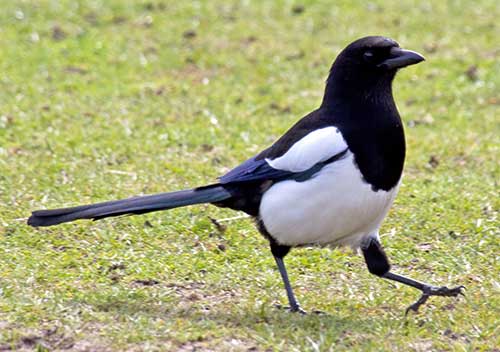Pest or guest of the month |
This monthly selection offers a description of some of Warriston's beasty inhabitants and advice on how to live with them organically. Find more in our Pest or Guest archive |
August 2018 — Magpies
|
These striking black and white birds, with tails as long as their bodies, shimmering blue in the sunlight, are often seen around the site. Singly, in pairs, or in gangs, they make their presence felt, as, particularly at this time of year, they can be seen mobbing smaller songbirds. During the summer they mainly eat caterpillars, spiders, worms, beetles and flies, and in the winter, fruit, berries and household scraps, but they also eat carrion throughout the year and have been known to kill small mammals. They are scavengers and predators and during spring, when they are feeding their young, they raid nests of songbirds for eggs and baby birds. Recently a plotholder on the east side reported the peace and quiet of a Sunday afternoon at the allotment shattered by the desperate screams and attempts of a pair of blackbirds to keep a pair of determined magpies from raiding their nest. For more than an hour the blackbirds fought off attempts by the predators – at this time of year, they are truly pests. Some magpie facts
|
Don't wear diamonds on your plot when magpies are at large
Photo: Tony Hisgett
One for sorrow
Two for joy Three for a girl Four for a boy Five for silver Six for gold Seven for a secret, never to be told
|



